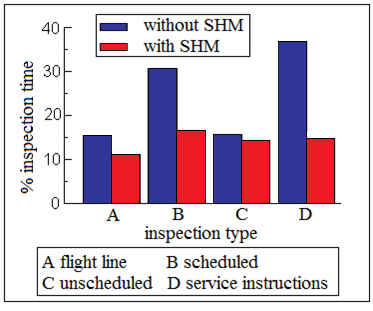Advantages of Structural Health Monitoring
SHM is emerging as an increasingly important component of overall Structural Health Management System (SHMS). Non-destructive Evaluation (NDE) programs are giving way to a network of sensors and actuators embedded or attached to the structure at the time of fabrication itself. This aims at continuous evaluation of the state of the structure with the help of acquisition and management of data received through the transducers on real time basis. The information received is useful in taking decisions regarding future management of the structure related to maintenance requirement, steps needed to prolonging the life of the structure, to downgrade the use or if needed to discard the use of the structure under consideration. With SHM in place the structure may be made light weight and cost effective leading to various obvious advantages, apart from getting rid of frequent unscheduled non destructive evaluations at a great cost and downtime. For SHM system to work effectively, it is important that the sensors must provide accurate measurements of:
- Reliable detection of defect with low false alarms
- Measurement of defect size and its location
- Magnitude of damage
- Detection of damage even in remote and inaccessible locations of the structure
The above information must be available with knowledge of suitable failure mechanism models for reliable interpretation and effective prognosis. An estimated saving of more than 40 percent on inspection time of modern fighter aircraft featuring both metal and composite structure has been reported through the use of smart monitoring system [Figure 2.2].

Figure 2.2: Inspection time saving with implementation of SHM on modern fighter aircrafts [Bartelds, 1997]
|